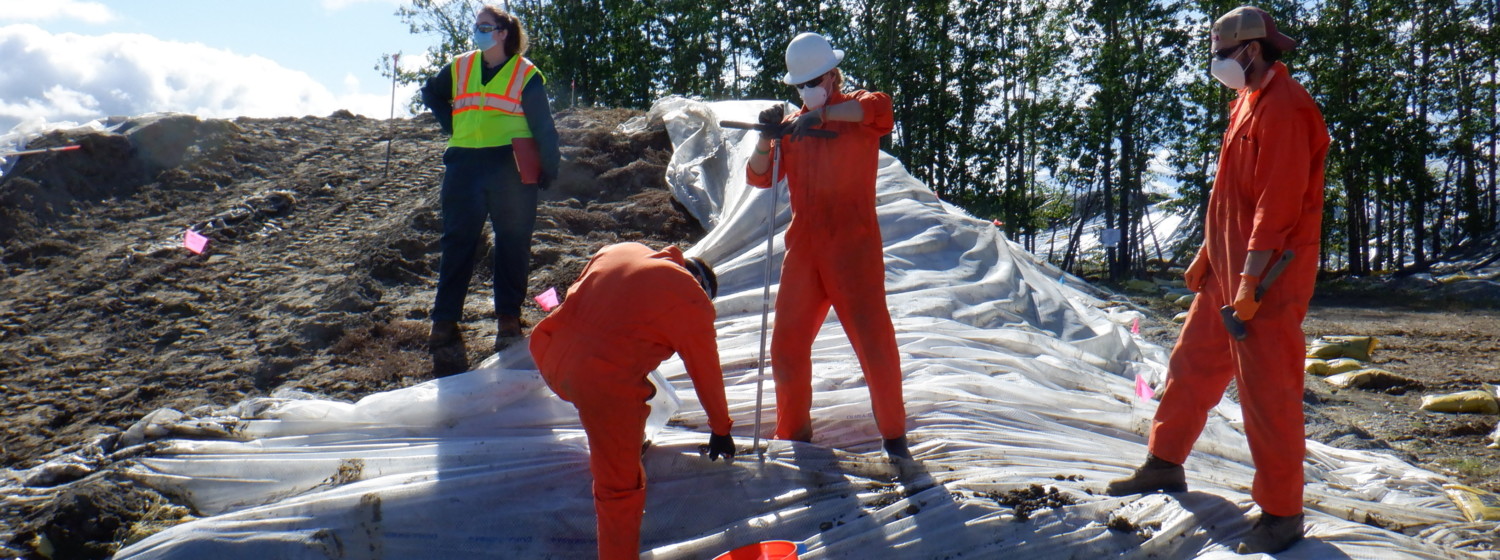Client: AECOM Technical Services/AFCEC
Location: Eielson AFB, Alaska
Scope of Work: Survey Characterization Data Validation
Brice self-performed characterization sampling of at least 28 soil stockpiles ranging in size from 10 cy to over 26,000 cy at Eielson AFB, Alaska. The soil stockpiles were generated during the F-35A Beddown Program, which required the removal of contaminated and non-contaminated soil to allow for new construction. The resulting soils were segregated and stockpiled according to known or suspected contaminants. Based on conservative delineation using available in situ soil data gathered prior to construction, the soil was suspected to contain the following contaminants: 1) perfluorooctanoic acid (PFOA) and/or perfluorooctane sulfonate (PFOS) or 2) PFOA and/or PFOS comingled with petroleum, oil, and lubricants (POL). Brice physically (bulk density, particle size distribution) and chemically characterized the stockpiled soils.
Brice incorporated multiple innovative approaches to execute the work. First, we negotiated approval to conduct a pilot study in early winter 2019. The purpose of the pilot was to validate the ISM methodology proposed in the Draft UFP-QAPP and ensure that the resulting data would meet Air Force data quality objectives and data usability goals. This pilot, conducted in late October 2019, confirmed the suitability of the ISM approach. Brice presented the data to the RPM team in December and the UFP-QAPP was approved with only minor changes.
The second innovation was in the development of the sampling approach. Brice performed a detailed positional and elevation survey of each stockpile. Surveys were conducted on stockpiles that were sample ready and required no further reworking. We used the survey data to create a 3D model of each stockpile in ArcGIS 3D Analyst, and used Visual Sample Plan (VSP) to design an ISM grid with vertically-oriented 500-cy Decision Units (DUs). The ISM approach included the collection of 30 increments per ISM sample. One triplicate sample was collected for every 10 DUs, with a minimum of one triplicate per stockpile to ensure that 95% UCLs could be calculated on a per-stockpile basis.
The third innovation was in the execution of the drilling program. Brice mobilized two drill rigs and two field teams for all three mobilizations (Oct 2019, Jun 2020, Sep 2020). The two drill rigs worked together to sample large stockpiles or simultaneously sampled two smaller stockpiles to maximize sampling efficiency. By the end of the third mobilization, Brice sampled 13 DUs a day without sacrificing safety or quality. While sampling a stockpile, we also drilled and marked the boundaries of each DU with PVC pipe to provide a visual delineator for the equipment operator during the eventual segregation of contaminated soils.
Brice performed three field mobilizations to complete the work:
- October 2019: 9 stockpiles for 11,700 cy of soil
- June 2020: 15 stockpiles for 75,000 cy of soil
- September 2020: 8 stockpiles for 52,000 cy of soil
Performance Highlights
- Completed ahead of schedule and on budget with no safety incidents.
- In a PPQ dated November 2020, received an overall rating of “Exceptional” for our performance


